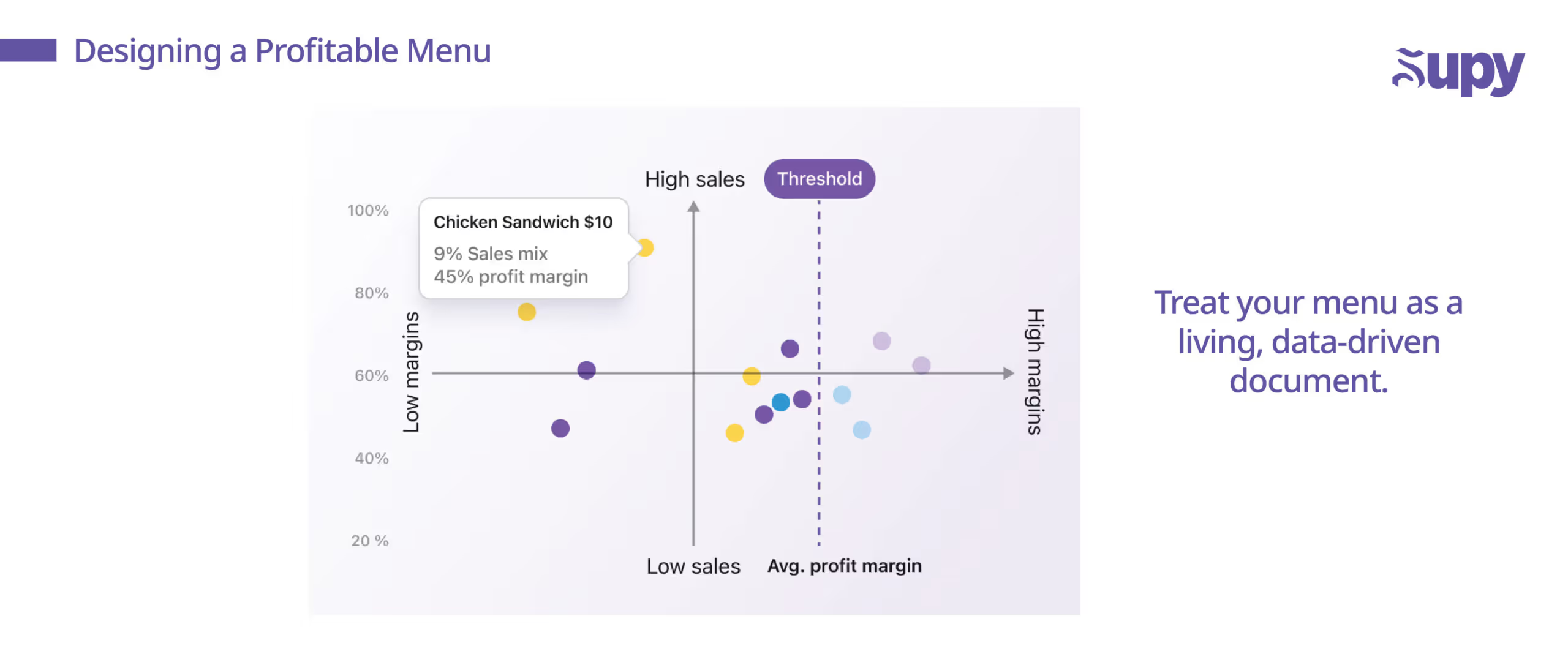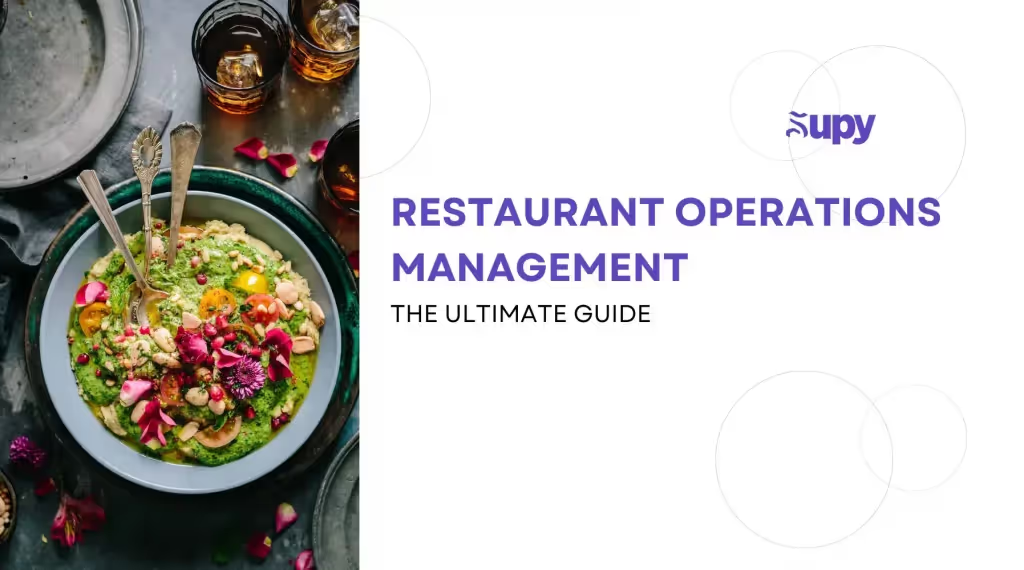Cost Control Strategies for Multi-Unit Restaurants

Cost Control Strategies for Multi-Unit RestaurantsRunning a profitable restaurant chain means keeping razor-sharp control over costs. With food prices volatile and labor expenses rising, multi-location operators must constantly watch the bottom line. The challenge is huge: in restaurants, food and beverage costs alone typically consume 25–35% of revenue, and labor can eat up another 30% or more. That leaves little room for error given average net margins of only ~5% in the industry. If you’re not actively managing costs across all your branches, profit can slip through your fingers.

Fortunately, there are proven strategies to tame costs without compromising quality or guest experience. This guide lays out five cost control strategies specifically tailored for multi-unit restaurant operators – from tightening up inventory management to optimizing staffing. Each strategy comes with actionable steps to implement across your locations. Let’s dive in and reinforce your chain’s financial health.1. Optimize Inventory Management and Reduce Waste

For most restaurants, the biggest cost line is cost of goods sold (COGS) – essentially your food and beverage inventory. Controlling COGS is ground zero for cost control. Start by ensuring you have a strong inventory management process (and system) in place across all branches. Key tactics include: - Track inventory usage and variance: Know exactly how much of each ingredient is used versus how much is purchased. Many restaurants lose money to waste and theft without realizing it. For example, the average restaurant wastes ~5-10% of the food it purchases. By conducting regular stock counts and monitoring inventory variance (the difference between theoretical usage and actual usage), you can catch issues early – like over-portioning or unrecorded wastage – and take corrective action. - Reduce excess stock: Overstocking ties up cash and often leads to spoilage. Set par levels for each item at each location (based on usage rates) and order accordingly. If a branch consistently has way more of an item than it uses, that’s money sitting on the shelf (or worse, headed for the trash). Smart ordering, guided by data, prevents wasteful surplus. - First-In, First-Out (FIFO): Make sure every outlet practices FIFO in storage so older product gets used first. This simple discipline can significantly cut down on food expiring on your watch. - Waste logging and analysis: Require each location to log daily wastage (spills, spoilage, burnt food, etc.). Reviewing these logs can reveal patterns – e.g., a particular prep process that yields high waste – which you can address through training or recipe adjustments. One multi-branch group found that by aggressively tracking and targeting waste, they trimmed food cost by 2% across the chain.Every kilogram of food saved from the garbage bin is a direct boost to your bottom line. Empower your branch managers with the tools (like inventory software and clear SOPs) and incentives to minimize waste. Over time, even small reductions – a percent here, a percent there – add up to huge savings across 10, 20, or 50 locations.
2. Engineer Your Menu for Profitability

Menu choices have a profound impact on cost control. A well-engineered menu can increase your average margin without customers even noticing. Multi-unit operators should regularly analyze menu performance: - Calculate the food cost of every item: Use recipe costing tools (or a simple spreadsheet) to determine what each dish costs to make, and its contribution margin. You might be surprised – sometimes that popular steak dish is barely breaking even once all ingredients are factored. Many chains target an average food cost percentage around 30%, but some items will be higher or lower. - Promote high-margin items: Once you know which dishes have the best margins (and are popular), feature them prominently. Train staff to upsell those items. Even tweaking menu layout or descriptions to favor profitable items can shift sales mix in your favor. - Trim or fix low-margin items: If a menu item has stubbornly high food cost (say 50%+), either reprice it, reformulate the recipe, or drop it. There’s no room for sacred cows here. One approach is to use a menu engineering matrix (plotting popularity vs profitability) to identify “Dogs” (low profit, low popularity) and “Plowhorses” (low profit, high popularity). Dogs probably should go. Plowhorses might need recipe adjustments or a slight price increase to improve profitability. - Cross-utilize ingredients: Design menus such that multiple dishes use the same core ingredients. This increases your purchasing efficiency and reduces waste (because ingredients turn over faster). The branch SOP even suggests reviewing recipe ingredients monthly to ensure they reflect current stock and to note any needed changes. If you find an ingredient that’s only used in one dish and often gets tossed out, that’s a candidate for elimination or replacement. - Portion control: Large portions not only inflate food cost but also generate waste when diners can’t finish. Consider right-sizing portions and using standardized serving utensils. You may find you can shave an ounce off here or there and no one complains – but your food cost % improves.By treating your menu as a living, data-driven document, you can systematically increase its profitability. The beauty for multi-unit operations is that a menu tweak in one flagship location, once proven, can be rolled out to all stores for multiplied effect.
3. Control Labor Costs with Smart Scheduling
Labor is often neck-and-neck with COGS as the biggest expense. For multi-location businesses, inefficient scheduling or overstaffing can silently drain thousands of dirhams/dollars a week. Implement these measures: - Use sales data for scheduling: Leverage POS and historical sales patterns to staff each shift optimally. For example, if Mondays and Tuesdays are consistently slow, don’t schedule a full crew “just in case.” On the flip side, ensure busy periods are properly staffed to maintain service (and avoid labor burnout/turnover, which has its own costs). - Set labor hour budgets per branch: Give each restaurant a labor cost target (as a % of sales or in hours allowed) and monitor it. Multi-unit operators often use metrics like labor cost % or hours per cover served to benchmark locations. If one store is an outlier (much higher labor cost for similar sales), dig into why – maybe their prep process is inefficient or they’re scheduling too many people in downtime. - Cross-train staff: Cross-training employees to handle multiple roles (e.g., a prep cook who can also run the grill) provides flexibility to cover shifts without overstaffing. It also helps smaller locations operate with leaner crews on slow days. - Manage overtime aggressively: Paying overtime rates can blow up your labor budget. Track hours and ensure managers cut off overtime unless absolutely necessary. It might be better to add a part-timer to fill a gap than have someone rack up 15 hours of OT. - Empower local managers, but hold them accountable: Give store managers tools like scheduling software and forecast models to create efficient schedules. Then review labor performance regularly. Some multi-unit groups have friendly competition, publishing a dashboard of labor cost % by store. No manager wants to be at the bottom of that list. Reducing labor cost doesn’t mean cutting service or overworking employees – it means scheduling smarter. The result is a more productive team and more sales generated per labor hour paid, which directly boosts profitability.
4. Streamline Procurement and Supplier Management
What you pay for your supplies directly affects cost of goods. Multi-branch restaurants have an advantage: buying power. Make sure you’re leveraging it: - Consolidate suppliers: Wherever possible, negotiate group contracts with vendors to get volume pricing. Instead of each branch buying produce from different suppliers, channel the volume to one or two and negotiate a discount. Suppliers love larger orders – you can often get lower per-unit costs once you promise a certain volume across all your locations. - Compare prices and rebid regularly: Don’t get complacent with long-time vendors if prices creep up. For major commodity items (meat, dairy, dry goods), periodically solicit quotes from competing suppliers. Even a 2% price reduction on a high-volume item is significant chain-wide. Some operators do vendor bids annually to keep suppliers honest. - Verify invoices and yields: Mistakes or even overcharges can happen on supplier invoices. Ensure each delivery is checked for quantity and quality, and that invoices match what was received. Also track yields – if a certain supplier’s chicken breasts have a lot of trim loss, their cheaper price might not actually be cheaper. These details can be uncovered by attentive kitchen managers and shared across the chain. - Order by needs, not habit: Use your inventory and sales data to drive purchasing. Avoid the trap of “we always order 10 cases of X each week” if half of that is now going unused. Align orders with actual usage patterns (which might change seasonally or with menu updates). Also, encourage branches to communicate – if Location A is overstocked on an item and Location B needs some, facilitate a transfer instead of new purchase. - Monitor supplier performance: Late deliveries or subpar quality can cause hidden costs (emergency buys at higher prices, or food waste from spoilage). Keep scorecards for your suppliers. If certain vendors consistently underperform, consider alternatives – reliability is part of cost control too.Efficient procurement ensures you’re not leaving money on the table in your supply chain. It might require coordination (maybe a centralized purchasing function or at least monthly calls with all branch managers), but the savings and consistency are well worth it.
5. Embrace Technology and Analytics

In a multi-unit operation, you can’t be everywhere at once – but data can. Modern restaurant management software provides dashboards and analytics that make cost control much easier: - Inventory management systems: As discussed, a good IMS will track usage, waste, and variance in real time, and can reduce inventory-related losses dramatically. If you haven’t already, invest in one that fits your needs. - POS analytics: Your POS data can show sales trends by hour, by item, by location – invaluable for scheduling and menu decisions. Many POS systems now integrate with inventory and staffing tools, giving you a holistic view. For instance, linking sales to inventory depletion helps flag if actual usage doesn’t match sales (potential theft or waste). - Labor management tools: Scheduling software with forecasting can automate a lot of the labor optimization process (and reduce overtime). Some tools even integrate weather or local event data to predict demand surges. - Central dashboards: Set up a corporate dashboard that pulls key metrics from all locations: food cost %, labor %, wastage $$, etc. Review it weekly or monthly. This high-level view quickly highlights outliers – maybe one branch has a food cost of 34% while others are at 30%. That’s a signal to investigate and share best practices or corrective actions. - AI and forecasting: Larger restaurant groups are dipping into AI to forecast everything from demand to optimal pricing. While you don’t need bleeding-edge tech to control costs, be aware that new tools are emerging (like AI-based ordering that predicts exactly how much of each item to prep or stock for each daypart). These can further fine-tune your cost structure by preventing overproduction and stockouts in a very granular way.The bottom line is that you can’t manage what you don’t measure. Technology helps you measure with precision and consistency. An upfront investment in the right systems can pay for itself many times over through cost savings and improved efficiency across your organization.Keeping costs in check across multiple restaurants is complex, but with these strategies, you can run a tighter ship and protect your margins. Start by picking one or two areas – say, inventory waste and labor scheduling – and make improvements this quarter. You’ll likely see immediate results. For a deeper dive into smart cost control, request a demo of Supy to learn how our platform helps multi-unit operators reduce food cost variance and streamline operations. And don’t miss our blog “Top 5 Restaurant Cost Control Strategies” for even more insights on boosting your bottom line.







